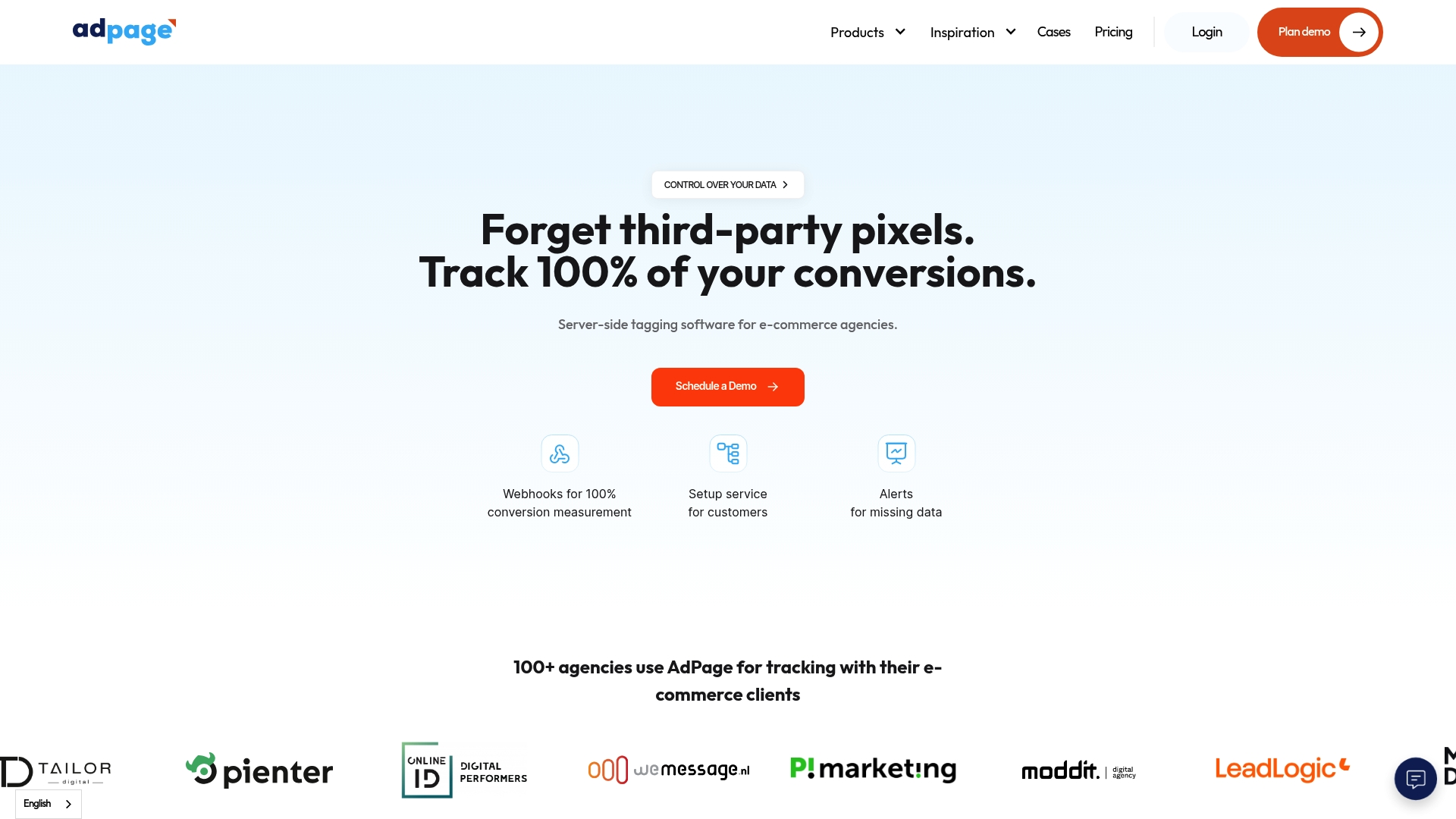Tracking user behaviour is changing how companies understand their customers online. Some businesses are now seeing conversion rates jump by up to 40 percent simply by analysing what users do on their sites. It sounds like just another bit of number crunching and website admin. Yet the real surprise is how this data turns guesswork into precise action that brings in more sales and keeps shoppers coming back. The statistics hide a quiet revolution for anyone wanting to move ahead in the digital market.
Tabla de contenido
- What Is Tracking User Behavior?
- Why Tracking User Behavior Matters For Businesses
- How Tracking User Behavior Works
- Key Concepts In Tracking User Behavior
- Real-World Applications Of Tracking User Behavior
Resumen rápido
| Llevar | Explicación |
|---|---|
| Tracking user behaviour enhances conversion rates | Effective behaviour tracking can improve conversion rates by up to 40% as it personalises user experiences and optimises website design. |
| Data-driven decisions lead to economic benefits | Businesses using user data see reduced customer acquisition costs and higher returns on marketing investments. |
| Comprehensive tracking reveals user needs | Granular insights from user interactions help predict customer needs and streamline workflows, enhancing overall satisfaction. |
| Multiple technologies support user tracking | Technologies like cookies, tracking pixels, and scripts are crucial for capturing detailed user interactions and creating profiles. |
| Ethical tracking is essential for consumer trust | Ensuring privacy and consent in data collection fosters trust and aligns with consumer expectations about data usage. |
What is Tracking User Behavior?
Tracking user behavior represents a strategic approach to understanding how individuals interact with digital platforms, specifically within e-commerce environments. At its core, this practice involves collecting, analysing, and interpreting data about user actions, movements, and engagement patterns across websites and applications.
The Fundamental Mechanics of User Tracking
User behavior tracking goes beyond simple page views and clicks. It encompasses a comprehensive examination of user interactions, including:
- Mouse movements and scroll depth
- Time spent on specific pages
- Product view duration
- Interaction with site elements
- Purchase completion rates
- Navigation pathways
By mapping these digital footprints, businesses gain profound insights into customer preferences, decision-making processes, and potential barriers in their online experience. Explore our detailed guide on web tracking insights for a deeper understanding of these mechanisms.
Importancia estratégica en el comercio electrónico
According to Gartner Research, companies that effectively track and analyse user behavior can improve conversion rates by up to 40%. This data-driven approach enables businesses to:
- Personalise user experiences
- Optimise website design
- Predecir las pautas de compra de los clientes
- Reduce las tasas de abandono de carritos
- Create targeted marketing campaigns
The process involves sophisticated tracking technologies that capture nuanced user interactions, transforming raw data into actionable business intelligence. By understanding how customers navigate, pause, and engage with digital platforms, organisations can make informed decisions that directly impact revenue and customer satisfaction.
Why Tracking User Behavior Matters for Businesses
In the competitive digital marketplace, understanding customer interactions is not just an advantage but a fundamental requirement for sustainable business growth. User behavior tracking transforms raw data into strategic intelligence that drives critical business decisions.
Economic Impact of Precise User Insights
Tracking user behavior directly influences a company’s bottom line. Learn more about building an effective tracking strategy, as businesses that leverage comprehensive user data can dramatically improve their economic performance. According to McKinsey & Company, data-driven organisations are 23 times more likely to acquire customers and 6 times more likely to retain them compared to competitors who do not systematically analyse user interactions.
The economic benefits extend across multiple business dimensions:
![]()
- Reduced customer acquisition costs
- Enhanced marketing campaign efficiency
- Improved product development strategies
- Precise targeting of marketing resources
- Higher return on marketing investments
Transforming User Data into Strategic Advantage
Modern businesses operate in an environment where customer experience determines market success. User behavior tracking provides unprecedented visibility into customer preferences, pain points, and potential friction zones within digital platforms. By understanding detailed interaction patterns, businesses can:

- Predict customer needs before they arise
- Create personalised user experiences
- Develop more intuitive product interfaces
- Streamline customer journey workflows
- Identify and eliminate conversion barriers
Tracking user behavior is not merely about collecting data but transforming that information into actionable strategies that directly contribute to business growth and customer satisfaction. This approach represents a fundamental shift from guesswork to precision-driven decision making in the digital marketplace.
How Tracking User Behavior Works
Tracking user behavior represents a sophisticated technological process that captures and transforms digital interactions into meaningful business intelligence. This intricate system involves multiple technologies and methodological approaches designed to understand user engagement comprehensively.
Technical Infrastructure of User Tracking
Learn more about pixel tracking technologies that form the backbone of modern digital tracking. The process involves several interconnected technological components that work seamlessly to capture user interactions:
- Tracking Pixels: Tiny, invisible images embedded in web pages
- Cookies: Small data files stored on user devices
- JavaScript Tracking Scripts: Dynamic code monitoring user actions
- Browser Fingerprinting: Unique device identification techniques
- Server-Side Tracking: Backend data collection mechanisms
According to IEEE Research, these technologies collectively generate a comprehensive digital profile of user interactions, capturing nuanced details about browsing patterns, engagement levels, and potential conversion triggers.
Below is a table summarising the main technologies and methodologies used to track user behaviour in digital environments, along with a brief description of their function.
| Technology/Method | Descripción |
|---|---|
| Píxeles de seguimiento | Invisible images embedded in web pages to record user interactions |
| Galletas | Small files on user devices storing data about browsing activity |
| JavaScript Tracking Scripts | Dynamic code that monitors and logs user actions in real-time |
| Huellas Digitales del Navegador | Identification of unique devices through specific browser attributes |
| Seguimiento del lado del servidor | Data collection managed directly on the web server, not the browser |
Data Collection and Analysis Mechanisms
The user tracking process involves three primary stages of data manipulation:
- Data Capture: Recording user interactions across digital platforms
- Data Processing: Transforming raw interactions into structured information
- Data Interpretation: Generating actionable insights from processed data
Modern tracking systems employ advanced algorithms and machine learning techniques to translate complex user interactions into strategic business intelligence. By understanding the intricate pathways of digital engagement, businesses can create more personalised, responsive, and efficient online experiences that directly address user preferences and potential friction points.
Key Concepts in Tracking User Behavior
Tracking user behavior encompasses a sophisticated set of principles and methodological approaches that transform digital interactions into meaningful business intelligence. Understanding these foundational concepts is crucial for effectively implementing and interpreting user tracking strategies.
Core Principles of Digital User Tracking
Explore the nuanced challenges of data tracking and how businesses navigate complex digital landscapes. The fundamental principles guiding user behavior tracking revolve around several critical dimensions:
- Privacy and Consent: Ensuring transparent data collection practices
- Data Accuracy: Maintaining high-quality, reliable interaction records
- Ethical Data Usage: Respecting user rights and expectations
- Comprehensive Interaction Mapping: Capturing holistic user journey perspectives
- Contextual Understanding: Interpreting data beyond surface-level metrics
According to Pew Research Center, approximately 81% of consumers are concerned about how their data is collected and utilized, underscoring the importance of ethical tracking methodologies.
Technological and Analytical Frameworks
Effective user behavior tracking requires sophisticated technological infrastructure and analytical frameworks that go beyond simple data collection. These frameworks integrate multiple approaches to generate comprehensive user insights:
- Quantitative Analysis: Measuring numerical interaction data
- Qualitative Interpretation: Understanding emotional and behavioral nuances
- Predictive Modelling: Anticipating future user actions
- Segmentation Strategies: Categorizing users based on interaction patterns
- Real-time Adaptation: Dynamic response to emerging user behaviors
By synthesizing these advanced tracking concepts, businesses can transform raw digital interactions into strategic intelligence that drives meaningful customer engagement and organisational growth.
Real-World Applications of Tracking User Behavior
User behavior tracking has evolved from a theoretical concept to a powerful practical tool transforming multiple industries. By converting digital interactions into strategic insights, organisations can create more personalised, responsive, and efficient experiences across diverse sectors.
Transformación del comercio electrónico y minorista
Understand how cookies impact modern tracking technologies and their practical implementation. In the retail landscape, user behavior tracking enables businesses to:
- Personalise product recommendations
- Predict purchasing patterns
- Optimise pricing strategies
- Reduce las tasas de abandono de carritos
- Enhance customer segmentation
According to Harvard Business Review, companies leveraging advanced user tracking can increase their marketing efficiency by up to 35% and boost conversion rates significantly.
Innovative Industry Applications
Beyond traditional retail, user behavior tracking demonstrates remarkable versatility across multiple domains:
- Healthcare: Monitoring patient engagement with digital health platforms
- Education: Understanding student learning patterns and interaction with online resources
- Financial Services: Detecting potential fraud and personalising banking experiences
- Media and Entertainment: Recommending content based on viewing habits
- Technology: Improving user interface design through interaction analytics
These applications showcase how tracking user behavior transcends simple data collection, becoming a strategic tool for understanding human digital interactions and creating more intuitive, responsive experiences across different sectors.
The following table provides an overview of real-world industry applications of user behaviour tracking and the specific purpose it serves in each sector.
| Industry Sector | Application Example | Propósito |
|---|---|---|
| E-commerce/Retail | Recomendaciones personalizadas de productos | Increase sales, improve customer experience |
| Sanidad | Monitoring patient engagement with digital platforms | Enhance patient adherence, personalise care |
| Education | Analysing student online learning patterns | Improve instructional methods, identify learning gaps |
| Financial Services | Detecting potential fraud, personalising banking | Strengthen security, tailor financial products |
| Media & Entertainment | Recommending content based on user viewing habits | Boost engagement, retain subscribers |
| Tecnología | Improving user interface design via analytics | Enhance usability, drive product adoption |
Unlock Accurate E-commerce Tracking and Maximise Your Conversions
Are you struggling with unreliable analytics, lost conversions, or incomplete user insights? The article highlights the challenge of collecting and analysing accurate user behaviour data, especially due to limitations of traditional tracking methods. These pain points can lead to missed opportunities, wasted ad spend, and difficulty in understanding customer journeys — all critical factors for e-commerce success.

Take control today with AdPage’s server-side tagging solution. Our platform eliminates tracking blind spots and guarantees the precise measurement of 100% of conversions. Experience effortless consent management, seamless integration with Shopify, WooCommerce, and Magento, and GDPR-compliant data tools. Let us help you transform tracking challenges into measurable growth. Visit AdPage for full details and book your personalised onboarding to start optimising your marketing performance immediately.
Preguntas frecuentes
What is tracking user behavior in e-commerce?
Tracking user behavior in e-commerce involves collecting and analysing data about how users interact with digital platforms, including their movements, engagement patterns, and actions taken during their online experience.
Why is tracking user behavior important for e-commerce success?
Tracking user behavior is vital for e-commerce success as it enables businesses to personalise user experiences, optimise design, predict purchasing patterns, and reduce cart abandonment rates, ultimately improving conversion rates and customer satisfaction.
What technologies are used to track user behavior?
Technologies commonly used for tracking user behavior include tracking pixels, cookies, JavaScript tracking scripts, browser fingerprinting, and server-side tracking mechanisms. These tools work together to capture detailed user interactions across digital platforms.
How can businesses effectively use the insights gained from user behavior tracking?
Businesses can leverage insights from user behavior tracking to predict customer needs, create personalised experiences, develop intuitive interfaces, and streamline customer journeys, all of which contribute to improved engagement and increased revenue.



.png)
